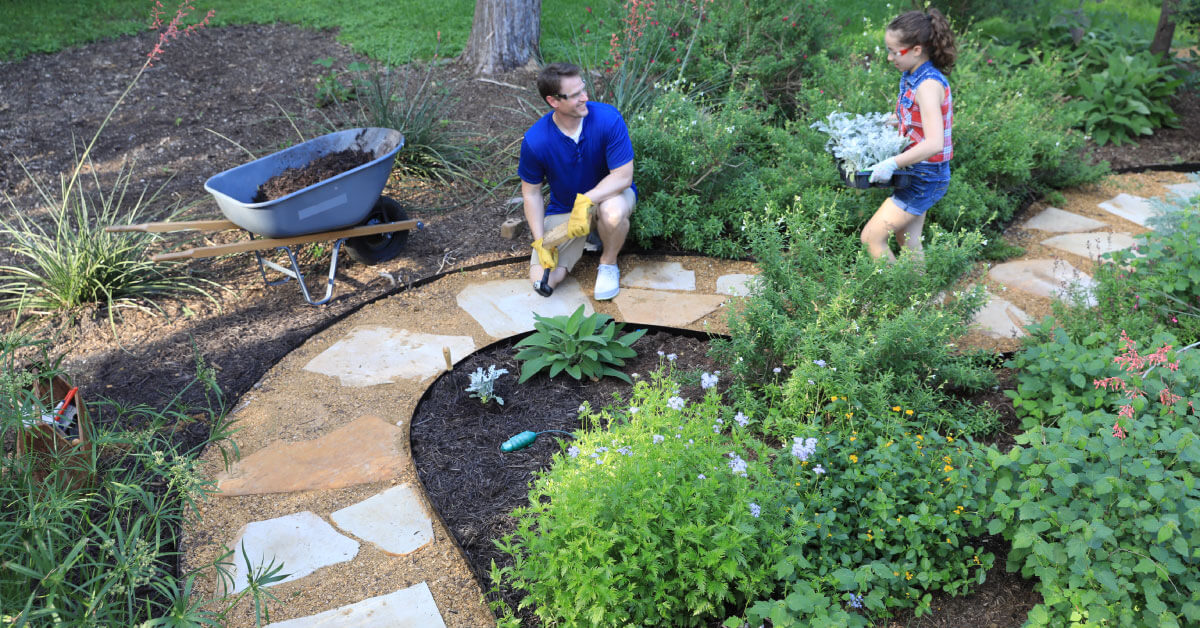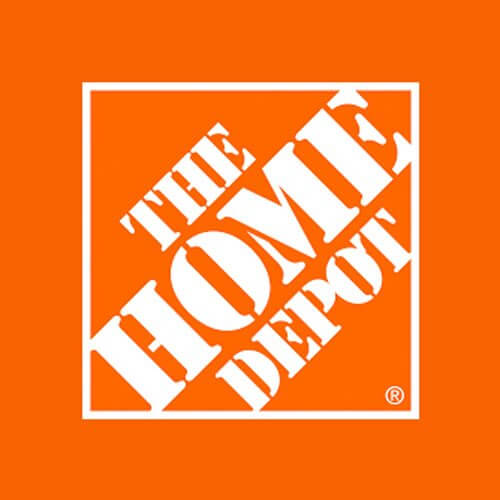7 Landscaping Mistakes and How to Avoid Them
A well-planned and executed landscape can be a game-changer for any home. Great landscaping can provide visual and functional benefits to your property. And the satisfaction of a job-well done can be re-lived every time you set foot outside to look at your hard work.
But like many DIY projects around the home, mistakes can happen (like endless trips back to the store for more supplies). That’s why we want to help you avoid the stress and expense of these 7 common DIY landscaping mistakes.
Mistake #1: Picking the Wrong Plants
When selecting the plants to fit in your landscaping design, it is important to do your research for each plant. Look for care requirements that include watering needs, spacing, growth, and sunlight exposure. It is important to choose plants that are suited for your particular climate and needs. Avoid buying landscaping plants on a whim. If you keep your plant choices aligned to your climate and landscape plan, care and maintenance will be much easier.
Keep in mind that there will be a wide range of different plants that can be used in landscaping designs. There are a variety of trees and shrubs in a host of sizes and they can be flowering, non-flowering, or evergreen. Flowers and ornamental grasses are also available and can be perennial, annual, or biennial. Perennial plants are those that return on their own each year while annual plants will die out after their growing season and new plants must be replanted the following year. Biennial plants are similar to annuals except that they take 2 years to flower, fruit, or seed before dying after the growing season.
Mistake #2: Overcrowding Your Plants
A common mistake many people make is putting plants too close together. This can do a lot of damage. First, the parts you see above the ground need ample room to grow properly otherwise they may choke out, or get choked out by, surrounding plants. Plants may be on the smaller side when you buy them, but they will usually continue growing until their average size is reached. Be aware of how tall and wide the plants will be when they are fully mature.
Second, root systems underground need space, too. Most plants have a care tag that details the basics of the plant’s needs, including spacing. Specifically, the tag will tell you how much distance to allow between plants and how deep the plant should be placed in the ground. Proper root spacing is vital to the health of the plant and other plants around it.
After researching and deciding which plants you want, it is best to plan out placement before you start digging holes. If you purchase seeds or bulbs, be sure to mark their locations with tags so that you do not accidentally put other plants too close or even over top of where you have put your bulbs or seeds.
Mistake #3: Not Edging Your Landscape
Edging is a vital aspect of landscaping and one that is often overlooked. Steel landscape edging defines your garden areas, providing a visual separation from the rest of the lawn. Some lawn grasses have very elaborate root systems that can rapidly spread and take over, quickly invading those garden beds that you have worked so hard to keep tidy. Steel landscape edging helps to provide a barrier to keep plant life where you want it.
Additionally, steel landscaping checks 3 common boxes for DIY homeowners:
- Easy Installation. Steel edging can be installed in 3 easy steps and lasts years without maintenance.
- Flexibility. Whether your landscape has straightaways with sharp corners or flowing curves, steel edging can bend and flex to accommodate your landscape design.
- Style. Steel landscape edging can work across many landscape designs styles and adapt to changing gardening trends.
The clean and simple edge from Colmet steel landscape edging helps your landscape be more “readable” while boosting curb appeal, all without breaking the bank. Plus, Colmet steel edging comes in several different colors and finishes! Ask your store associate to help you place an online order for more color options. DIY homeowners can find Colmet steel edging products at:
Mistake #4: Don’t Forget to Mulch
Mulching provides protection for your plants. It serves as a defense against weeds, aids in moisture retention, and provides insulation from cold and hot temperatures. Different mulches are available depending on your needs. Red or black-colored mulches are the most common choices. Additional options include leaf mulch, pine needles, and several types of inorganic mulch that include rubber and stone.
Plan to use about 3 inches of mulch in your garden bed, taking care to spread around equally. Over time mulches can start appearing discolored or faded and it can start to dry out and break down.
Each year, old mulch can be completely replaced with new mulch. Or you can remove about an inch and a half off the top and add new mulch to refresh. If you choose organic mulches, you will need to refresh your mulch every year.
Mistake #5: Not Planning for Irrigation
Options for irrigation are plentiful. You can choose an above-ground sprinkler that attaches to a garden hose. If you have an existing sprinkler system, you can opt to reposition a sprayer to provide watering to your plants. You can also utilize irrigation tubing above or below your mulch. This tubing has holes all over to allow water delivery, often by a hose attached to an outdoor faucet. Soaker hoses function in the same way, with much smaller holes. Most soaker hoses are made from a porous material that actually gradually allows water to seep through the hose instead of all at once.
No matter the method you choose to use, keeping your plants hydrated is key to keeping them alive longer. Make sure to research how much water your plants need so you don’t over- or under-water them.
Mistake #6: Ornament and Yard Art Stuffing
Gnomes, fairies, birdbaths, gazing balls, and statues are just a few of the many things people put in their yards. One or two pieces can make a statement, compliment your entire design, and pull your whole landscaping look together. An abundance, or overabundance, of yard art can feel cluttered and overwhelming. Too much yard art can make your garden appear too busy and take away from the natural appeal of your plants. Avoid the temptation to keep adding more decorations to your landscaping design, and opt instead for a few well-placed items.
Mistake #7 Color Overload
Common landscaping mistakes people make include just throwing a hodgepodge of plants together, which really hurts your curb appeal. Choose a color palette, often 2-3 colors, that compliment each other and stick with it. If you desire more of a contrast to break up your main color theme, choose a sharply contrasting color and limit the amount. A few plants can provide enough visual appeal without making your garden appear overwhelming.
It is often a good idea to start with a few perennials that you are set on having, and then choosing annuals to experiment with. The annuals will help you choose colors that you love without having to commit to something permanent because they will die out at the end of the season. It is also ideal to mix seasonal annuals with evergreen perennials so that you can change plants with the season. During the spring, summer, and fall months there are different types of plants available to help you do this, and during the winter months your evergreen plants will provide a hint of color when everything else has died out.
Landscaping is a rite of passage for DIY homeowners, but it doesn’t have to be riddled with expensive “oops” and “oh no’s.” Avoid these common landscaping mistakes and you’ll be well on your way to that feeling of accomplishment from a well-planned and executed landscape.





